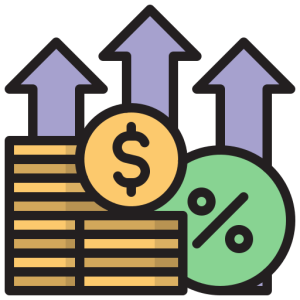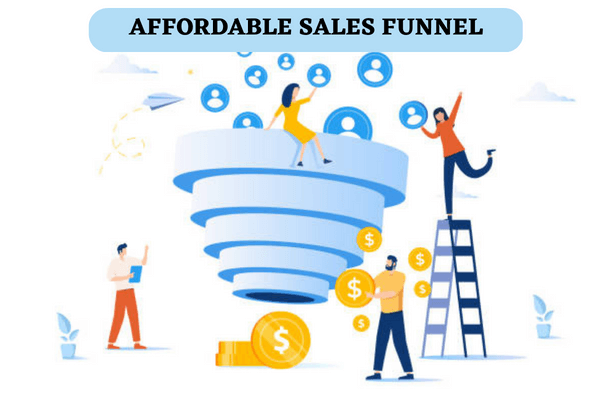What Is a Sales Funnel?
A sales funnel is a fundamental concept in marketing and sales that represents the journey a potential customer takes from initial awareness of a product or service to making a purchase. It’s called a “funnel” because, at each stage of the process, there’s a gradual narrowing down of prospects until only a portion of them ultimately become paying customers.
Here are the key stages of a typical sales funnel:
1. Awareness
This is the broadest stage of the funnel. At this point, potential customers become aware of your product or service. They might come across your brand through advertising, social media, content marketing, or word-of-mouth. The goal is to capture their attention and make them aware of your offering.
The awareness stage is the first and widest part of the sales funnel. At this point, potential customers have just become aware of your brand, product, or service. It’s like the initial introduction, and your goal is to capture their attention and make a positive first impression. Here’s how to navigate this stage effectively:

- Target Audience Understanding
To generate awareness, you must first understand your target audience. Who are they? What are their interests, pain points, and needs? What platforms do they frequent? This understanding helps you tailor your messaging and choose the right channels to reach them.
- Content Creation
Create content that resonates with your target audience. This could include blog posts, social media updates, videos, infographics, podcasts, or even webinars. The content should be informative, engaging, and relevant to your audience’s interests and challenges.
- Leverage Social Media
Social media platforms are powerful tools for generating awareness. Share your content on platforms where your audience is active, and use appropriate hashtags and keywords to increase discoverability. Engage with comments and messages to build relationships.
- Search Engine Optimization (SEO)
Optimize your website and content for search engines. When potential customers search for relevant topics, your content should appear in search results. Use keyword research to identify the terms your audience uses.
- Content Distribution
Don’t limit your content to your website or social media profiles. Share it through email newsletters, guest posts on industry websites, or partnerships with influencers. The broader your content distribution, the more likely it is to reach a wider audience.
- Paid Advertising
Consider using paid advertising channels like Google Ads or social media advertising to boost your reach. Paid ads can help you target specific demographics and interests, ensuring your content reaches those most likely to be interested.
- Educational Content
In the awareness stage, focus on educating your audience rather than hard selling. Share valuable information that addresses their pain points or answers their questions. By providing solutions or insights, you establish yourself as a helpful resource.
- Engagement and Interaction
Encourage engagement with your content. Ask questions, seek opinions, and invite comments. Respond promptly to comments and messages to foster two-way communication and build rapport.
- Brand Consistency
Maintain consistency in your branding across all channels. Your brand’s visual identity, tone, and messaging should be uniform, making it easier for your audience to recognize and remember you.
- Measure and Analyze
Use analytics tools to track the performance of your content. Monitor metrics such as website traffic, social media engagement, and email open rates. Analyze which types of content resonate most with your audience and adjust your strategy accordingly.
- A/B Testing
Experiment with different types of content, headlines, visuals, and posting schedules. A/B testing can help you identify what works best in capturing your audience’s attention and driving engagement.
- Remarketing
For those who engage with your content but don’t take further action, consider remarketing strategies. This involves targeting them with follow-up content or offers to move them further down the funnel.
The primary objective of the awareness stage is to create brand awareness and draw potential customers into your funnel. By delivering valuable content, understanding your audience, and leveraging various channels, you can successfully introduce your brand to a wider audience and lay the foundation for building relationships that lead to conversions in the subsequent stages of the funnel.
2. Interest
Once individuals are aware of your product or service, some of them will develop an interest. They might explore your website, read your blog posts, or watch videos related to your offering. The goal at this stage is to provide valuable information that nurtures their interest and educates them about the benefits of your product or service.
The interest stage is the second phase of the sales funnel, following the awareness stage. At this point, potential customers have moved beyond basic awareness of your brand and have shown genuine interest in what you offer. Your goal in this stage is to nurture that interest and guide prospects toward considering your product or service as a viable solution to their needs. Here’s how to effectively engage prospects in the interest stage:

- Content Relevance
Continue providing content, but now focus on content that delves deeper into the specific pain points, challenges, and solutions related to your product or service. Offer in-depth articles, guides, case studies, and videos that demonstrate your expertise and showcase how your offering addresses these issues.
- Email Marketing
Implement an email marketing strategy to keep your brand top-of-mind. Encourage visitors to subscribe to your newsletter or mailing list to receive updates, exclusive content, and offers. Use personalized email campaigns to nurture leads and provide valuable insights.
- Lead Magnets
Create lead magnets like ebooks, whitepapers, templates, or webinars that offer substantial value. In exchange for these resources, ask prospects for their contact information. These lead magnets can help you identify highly interested leads who are willing to share their details.
- Drip Campaigns
Set up automated drip email campaigns that send a series of targeted emails to nurture leads over time. These campaigns should align with the prospect’s interests and pain points, gradually guiding them toward considering your solution.
- Personalization
Tailor your content and communication to individual leads based on their behavior and interests. Personalization can significantly boost engagement. Mention specific pain points they’ve shown interest in and offer relevant solutions.
- Webinars and Workshops
Host webinars or online workshops that dive deep into industry-specific topics. These live events allow you to interact with your audience, answer questions, and demonstrate your expertise in real time. Record the sessions for those who couldn’t attend.
- Case Studies and Success Stories
Share success stories and case studies that highlight how your product or service has solved real problems for others in a similar situation. These provide social proof and help prospects envision the benefits of choosing your offering.
- Interactive Content
Engage prospects with interactive content such as quizzes, assessments, or calculators. Interactive content not only captures attention but also provides personalized results, making it more valuable to the user.
- Engagement on Social Media
Continue engaging with your audience on social media. Share content, answer questions, and participate in discussions related to your industry. Social media is a platform where potential customers can express their interest and ask questions.
- Live Chats
Implement live chat on your website to provide immediate assistance to interested prospects. Live chat enables real-time conversations, allowing you to address queries and provide personalized recommendations.
- Retargeting Ads
Utilize retargeting or remarketing ads to reach prospects who have shown interest in your website or content but haven’t taken further action. These ads serve as gentle reminders and can rekindle their interest.
- Content Sequencing
Plan content sequences that guide leads through a logical progression. For example, after a prospect downloads an ebook on a specific topic, follow up with related content that offers more depth or solutions related to that topic.
- Engage in Thought Leadership
Position yourself as a thought leader in your industry. Share your insights, opinions, and unique perspectives on relevant topics. Consistent thought leadership content can attract highly interested prospects seeking expert guidance.
- Feedback and Surveys
Seek feedback from leads and prospects about their pain points and preferences. Use surveys or direct conversations to understand their needs better and tailor your offerings accordingly.
The interest stage is a critical phase where you nurture and deepen the engagement of potential customers who have shown genuine interest in your offerings. By delivering valuable and relevant content, personalized communication, and opportunities for interaction, you can further educate prospects and guide them toward considering your product or service as a viable solution to their challenges.
3. Consideration
At this stage, prospects are actively considering whether your product or service meets their needs. They might compare your offering with competitors, read reviews, or seek additional information. Your content and communication should address their specific questions and concerns to help them make an informed decision.
4. Intent
Prospects who reach this stage are showing a clear intent to make a purchase. They might sign up for a free trial, request a quote, or add items to their shopping cart. This is a critical point where you need to facilitate the conversion process, removing any obstacles that might prevent them from completing the purchase.
5. Purchase
This is the narrowest point of the funnel, where prospects become customers by making a purchase. The goal is to provide a seamless and satisfying buying experience, ensuring that the transaction is smooth and secure.
6. Post-Purchase
The sales funnel doesn’t end with a purchase; it extends into the post-purchase stage. Here, you aim to turn one-time customers into repeat buyers and brand advocates. This involves providing excellent customer service, seeking feedback, and offering post-purchase support or upselling related products or services.
7. Advocacy
Ideally, satisfied customers become advocates for your brand. They may refer others, leave positive reviews, and engage with your brand on social media. Their advocacy can help attract new prospects, creating a cycle that feeds back into the top of the funnel.
8. Retention and Loyalty
Building a loyal customer base is an ongoing process. To retain customers, you must continue delivering value, personalized experiences, and incentives such as loyalty programs or exclusive offers.
Sales funnels can vary in complexity and may have additional stages or sub-stages depending on the nature of the business and the complexity of the buying process. The key to a successful sales funnel is understanding your target audience, their needs, and the specific actions they need to take at each stage to move closer to becoming loyal customers. By effectively guiding prospects through the funnel, businesses can maximize their conversion rates and revenue.






